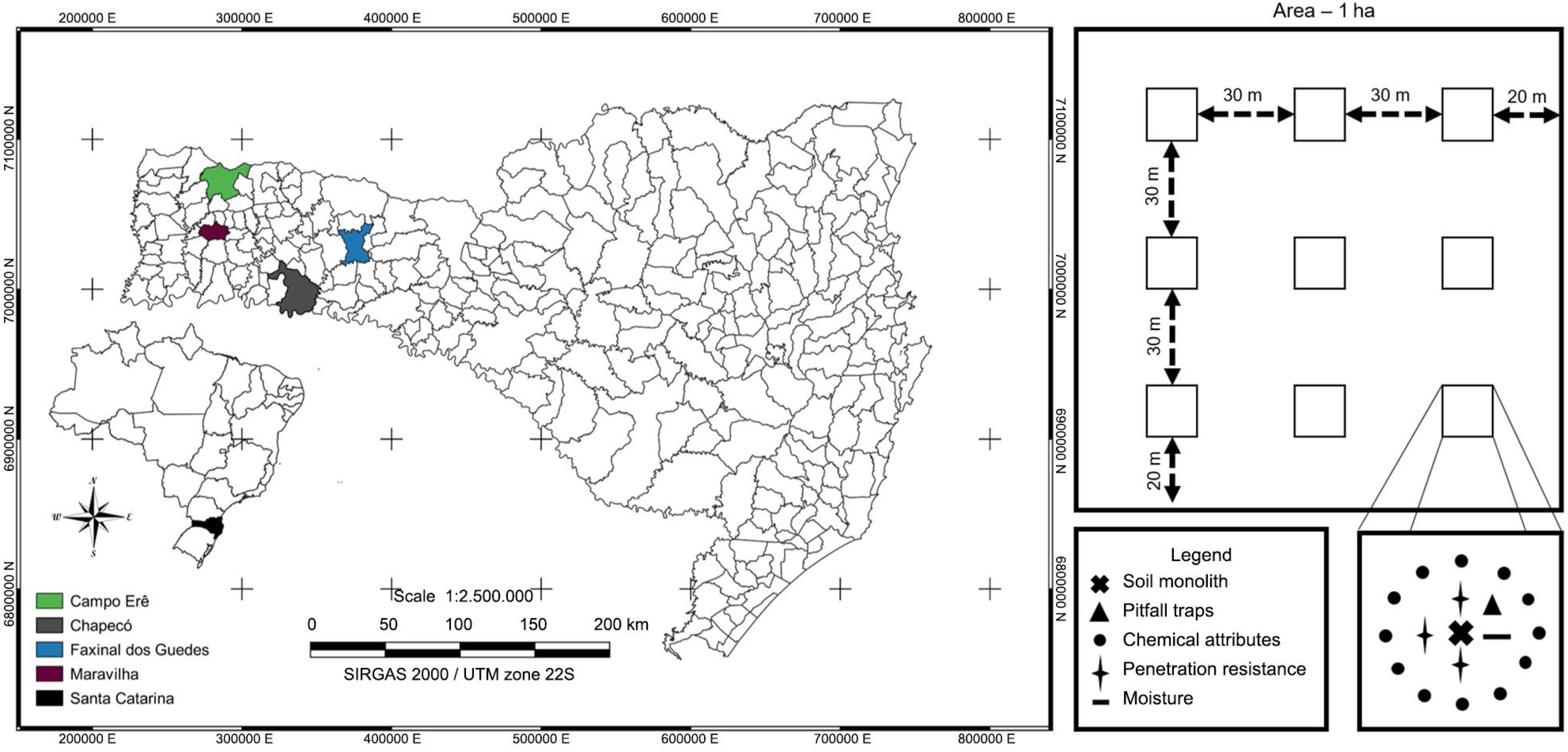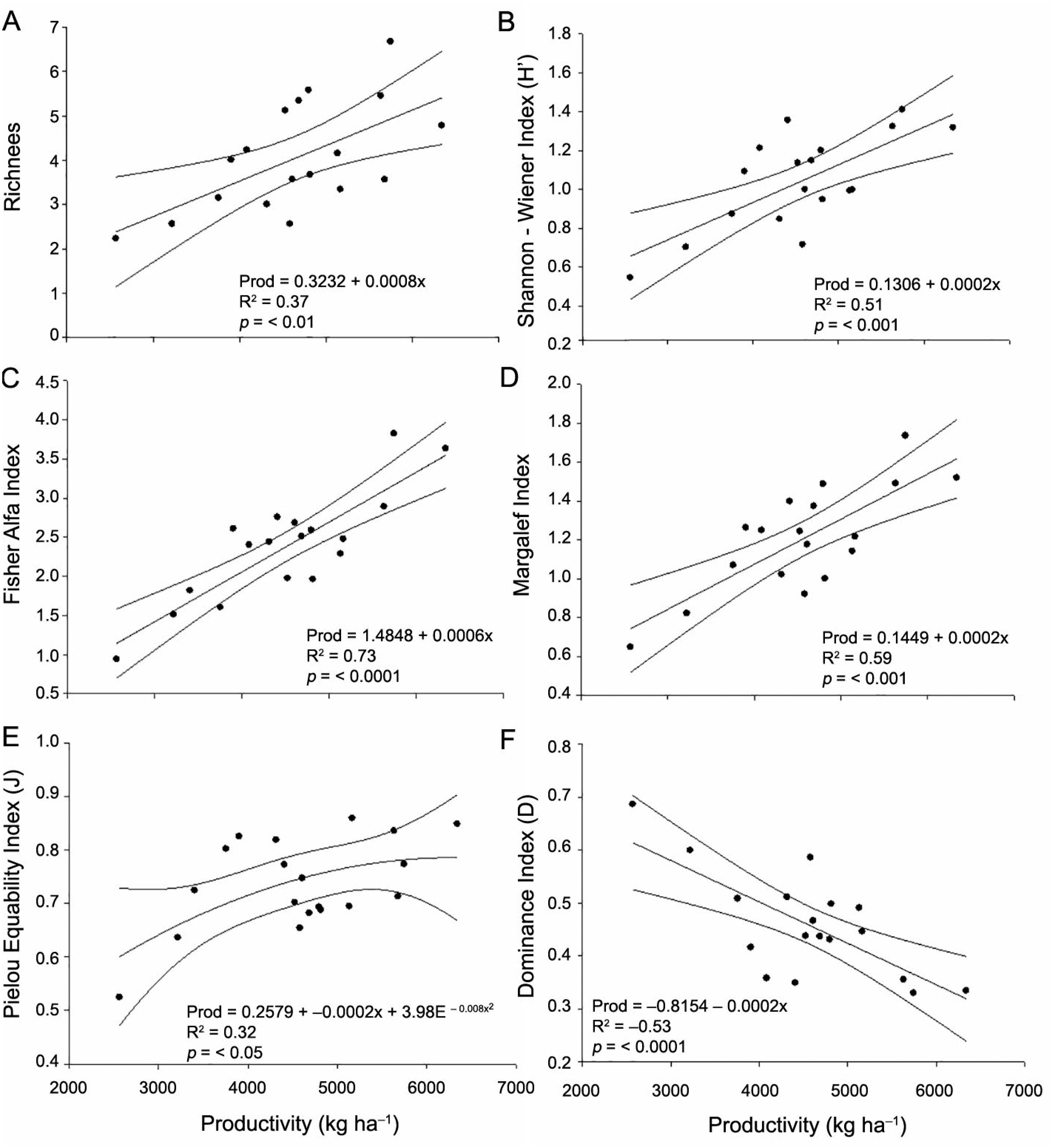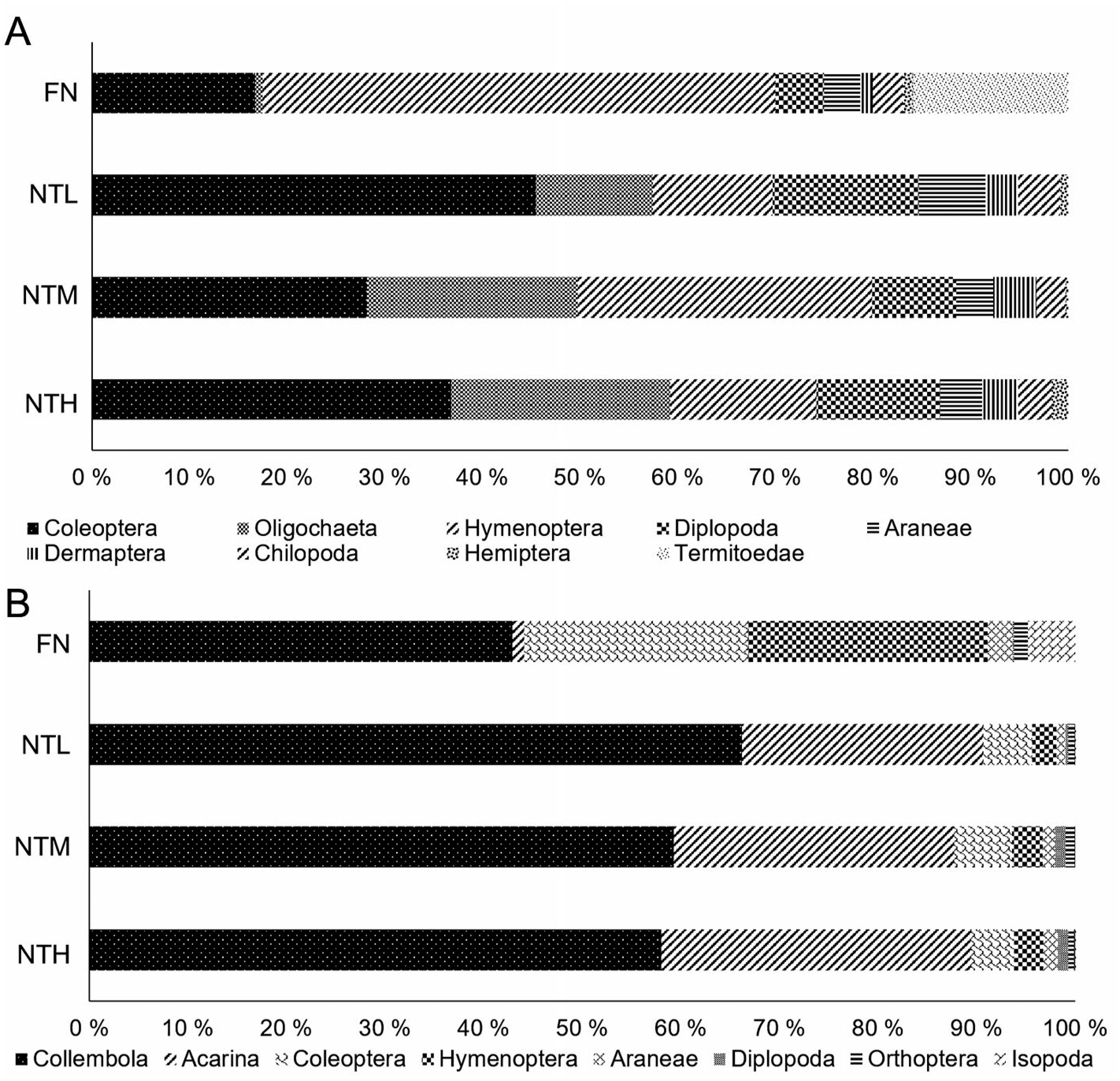ABSTRACT:
This study aimed to evaluate the relationship of edaphic fauna under a no-tillage system with different levels of soybean productivity [High (NTH), Medium (NTM) and Low (NTL)] in the west of Santa Catarina (Brazil), identifying which chemical and physical variables most affect them, and the best indicators that can be used. Native forest (NF) areas were used as a reference. A total of 207 samples of soil fauna were collected by soil monolith and pitfall trap methods over two years of evaluation in four municipalities. Based on edaphic fauna data, Shannon-Wiener (H’), Pielou (J), Dominance (D), Margalef and Fisher Alpha (α) indices were generated, in addition to the average richness and abundance. Data from NTs were submitted to analysis of variance and compared by Tukey's test (p > 0.05). The NF was used as a reference and compared with the agriculture system by Dunnett test (p > 0.05), and regressions between soybean productivity and diversity indices. The H’, Margalef, α indices, and average richness for soil fauna sampled by soil monoliths followed the productivity gradient NTH > NTM > NTL, showing a positive correlation with the increase of soybean productivity. NTH has a diversity index similar to that of NF. Soybean productivity is affected by the richness and diversity of edaphic fauna, but abundance was not sensitive in predicting treatments under no-tillage; Fisher's alpha index was more sensitive in treatment separation with soil monoliths. The environmental variables aluminum, organic matter, phosphorus, potassium and penetration resistance affect the fauna edaphic.
Keywords:
soil quality; soil biology; agricultural sustainability; conservation system




